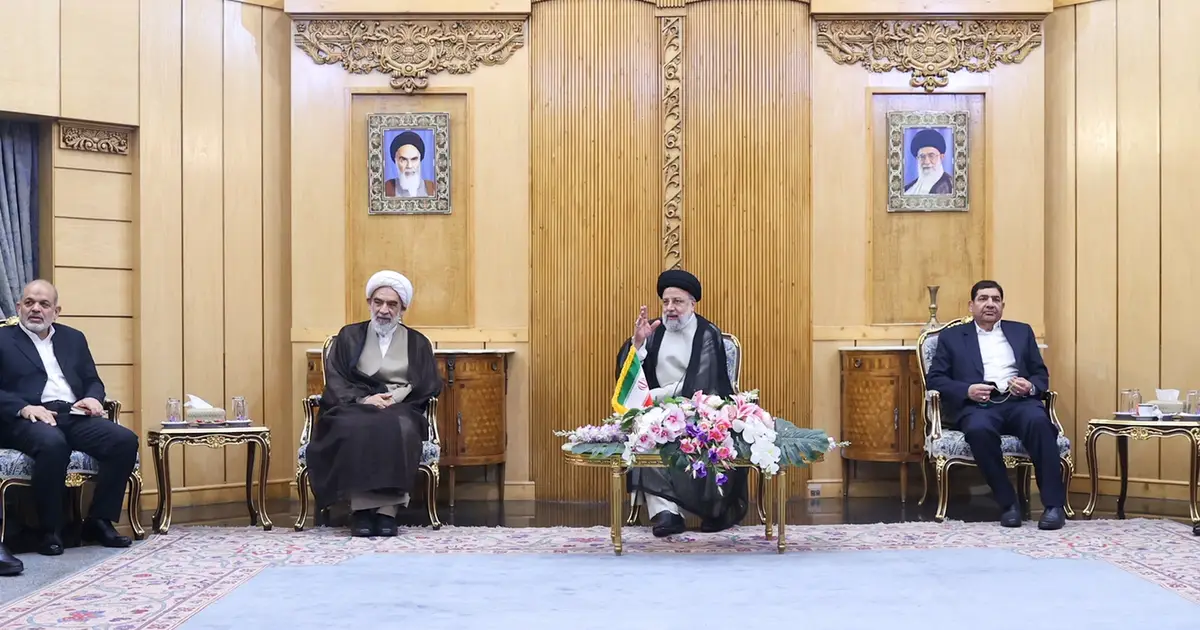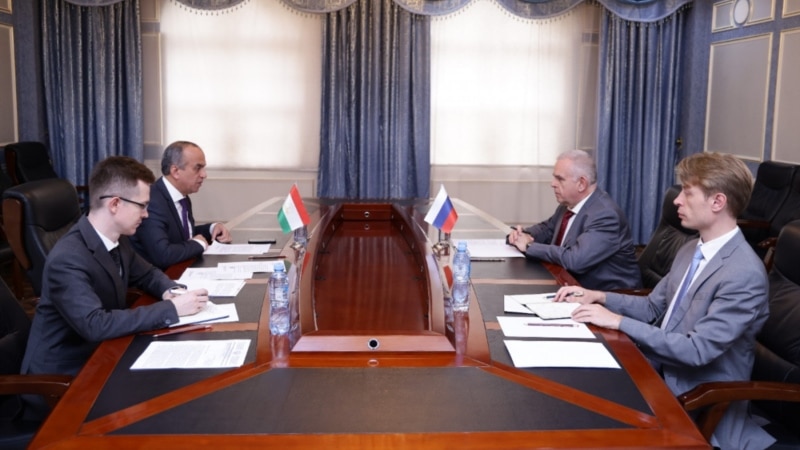The news of Tehran regime’s military-industry complex showcasing its “Gaza” drone at Doha International Maritime Defense Exhibition and Conference (DIMDEX) surprised few industry observers.
Until DIMDEX entered the stage in 2008, Turkey’s Istanbul International Defense Industry Fair, “IDEF” (1993-present), UAE’s Abu Dhabi International Defense Exhibition, “IDEX” (1993-present), and Pakistan’s Karachi International Defense Exhibition and Seminar, “IDEA S” (2000-present), did enjoy unrivalled seniority over Qatar’s DIMDEX as regional biennial military exhibition hubs. But Iran’s effective “show” of its military hardware at DIMDEX 2024, the Qatari military exhibition just took the whole concept of arms deals and commerce to a grand new level.
Certainly, this is not Iran’s first rodeo at DIMDEX as the Iranian military industrial complex has been an enthusiastic participant at Qatar’s military expo for quite a few years. Since 2014, Qatar and Iran have become increasingly aligned in a cold war against Saudi Arabia and their military and security cooperation and sponsorship of non-state antagonists such as Hamas has bonded them in an unprecedented way.
From 2018 onwards, Iran has offered a far more diverse arsenal of missiles and drone technology at Qatar military expo. The Iranian military tech have passed muster in a half dozen proxy conflicts across the world over the past decade. The list is long and diverse. Ethiopia put Iranian drones in battlefield in Ethiopia-Tigray conflictwith utmost effectiveness. Houthis use the same technology in their relentless and frequent assault on shipping lanes in the Red Sea. The very Iranian drones supplied to Iraqi-Shia militia have killed US service members in Jordan recently. The Hezbollah of Lebanonand Hamas use Iranian supplied drone technology against Israel. And last but not least, Putin’s Russia has unleashed thousands of Iranian Shahed suicide drones upon hundreds of thousands of Ukrainian civilians.
Since Apartheid South Africa, itself a major arms supplier and subject of multiple sanction regimes on an international scale by the 1980s, the Tehran regime has effectively beaten the multitude of sanction regimes imposed upon it by the Euro-American alliance. Whilst the Mullahs’ decades long deepening strategic entente with Russia and China has been fundamental to the success of their sanction thwarting measures, it is Western complacency that has arguably “enabled “the Iranian regime’s meteoric rise to its present “drone” mastery.
DIMIDEX has served the Mullahs in Tehran, their praetorian IRGC, and their proxy henchmen across the Middle East by leaps and bounds. Whilst DIMIDEX helped establish the Tehran regime as a competitively “affordable” and “lethally” reliable supplier of military drones, as well as missiles, in the era of post-Cold War “asymmetrical warfare”. More importantly, it has established Tehran as a global middle power with far reaching destabilizing potentials like no other.
The tale of the recent rise of a regime like the Islamic Republic of Iran that has been frequently called “rogue” by various members of the Euro-American alliance over the past forty-five years to such lethal and de-establishing pre-eminence was authored with the enabling hand of the combined EU-US diplomatic appeasement or practical complacencies. Also, increasing US isolationism in the aftermath of Iraq War, and the economic upheavals inflicted upon the West by the 2008 Great Economic Recession played a role.
Intervening catastrophic events, namely, the Arab Spring and the rise of ISIS, acted as a catalyst to catapult the Iranian regime to its present hegemonically destabilizing status. The advent of the Arab Spring, in tandem with President Obama’s phased withdrawal of the US troops from Iraq and his administration’s hesitation to intervene in Syria in the face of the usage of unconventional warfare by the Syrian regime against civilians, marked the beginning of the rise of the Iranian regime to this high station.
As ISIS emerged in the wake of Iraq’s sectarian conflict and the worsening of the Syrian civil war, Iran joined Russia to keep Assad in power in Syria and reinforced its proxy militias in Iraq. The IRGC under Qassem Soleimani began developing all manner of military hardware suitable for application in asymmetrical warfare like one waged by anti-Assad militia in Syria and ISIS across the region. By 2018, the Iranian drones rivalled the Turkish ones in the skies of Syria and became an indispensable strategic arm of Iraqi militia forcesand Yemeni Houthi army. Certainly, rivalry with Saudi Arabia and the Gulf Cooperation Council states was a primary casus belli for the Iranian regime to ever fortify the Houthi arsenal with missile and drone technology.
Some could, and did, justify the Euro-American alliance’s appeasement and rapprochement with the Iranian regime that culminated to the 2015 JCPOA on grounds of “raison d’états”, namely, quelling ISIS. In fact, they went as far as likening such “expedient policies” to the Grand Alliance between the Anglo-American powers and Stalin’s USSR during WWII against Hitler. Yet, this invoked a bizarrely flawed historical analogy.
The Iranian regime was allied with Russia primarily to destroy anti-Assad Syrian rebellion, and ISIS was a bloody inconvenience that turned up amid such an intervention and was dealt with accordingly. In the course of their alliance, Iran and Russia partook in the massacre of hundreds of thousands of Syrian civilians and displaced millions of others, and they also quelled ISIS. The Russo-Iranian military alliance in Syria was thus not a benevolent humanitarian intervention. It was only akin to the Italo-German intervention on behalf of Franco’s fascists in the Spanish Civil War. In fact, such an exercise was precursor to, and did congeal, the later Italo-German military alliance as Axis against France and Britain in 1940.
Similarly, the collaboration between Iran’s IRGC and Wagner group during the Syrian Civil War consolidated the already deeply developed military industrial collaborations between the two countries; and drone development was one of many such collaborations. Against the backdrop of their earlier military collaboration in Syria, the Iranian drone contribution to Russia’s lethal operations against Ukraine was thus not an aid expected from a “client” of Russia but was an urgently needed assistance offered by “an ally” that had already showcased the usage of this technology against militants and civilians alike to their Russian partners in Syria.
Euro-American appeasement diplomacy vis-à-vis the Iranian regime continues to date despite the end of ISIS. EU and the US continued to subject the Iranian regime to “sanction regimes, threats and public chastening” but in effect have not deterred the regime effectively and concretely from its destabilizing practices.
Iran’s Shia Imperium have sent many shots across the Euro-American alliance’s bow in the region; some have even taken the life of US service members in the past six months. The recent March 19, 2024 Wall Street Journal’s reporting on EU-US rift over sanctioning Iran for weapons transfers in the Middle East is illustrious of the European pathological enabling of the Iranian regime’s military industrial complex; an enabling appeasement diplomacy that has imposed high energy costs for average European households with inflationary results and led to catastrophic consequences for millions from the Russo-Ukrainian war front to the troughs of Bab-al-Mandab and the Red Sea.
EU diplomacy, which might as well be dubbed “Borrell’s diplomacy”, is symptomatic of a deep-seated complacency in the attitude of the Euro-American alliance towards the Iranian regime. Whilst Biden administration turned a blind eye to Iran’s surging oil exports to China, both the US (under successive Obama, Trump, and Biden administrations) and EU were guilty of willful blindness towards Iran on the transfer of UAV parts and academic knowhow to Iran.
Roughly a month ago, it was revealed that US, UK, and Australian universities were involved in drone technology research with top Iranian technology universities. Just three days before the publication of the Guardian report of the Western-Iranian academic collaboration on drone technology, Iran International published its own investigative report that reveled the Euro-American complacency allowed Iran to import drone parts since at least 2014. The Guardian of London, which was once owned and published by the renowned liberal C.P. Scott, has got it wrong when it declaims “how Iranian-supplied drones are changing the nature of warfare”. The article should have been befittingly rephrased: “How Iranian-supplied drones, unenforced sanctions, and appeasement helped a ‘rogue’ regime become a destabilizing global middle power”. Iran’s “Gaza” drone at DIMIDEX was simply “proof that is in the ‘Iran’s UAV technology’ pudding”.

 4 weeks ago
29
4 weeks ago
29


